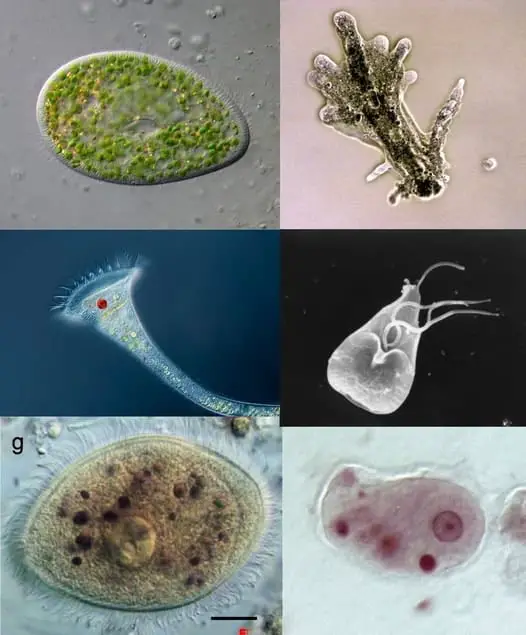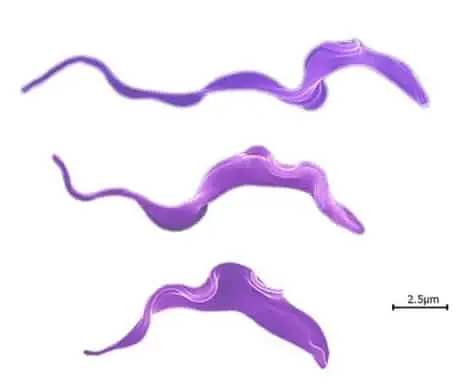Protozoa is taxonomic designation that is used to classify a set of eukaryotic, single-celled, microorganisms into the rank of subkingdom. There are about 50,000 identified species in the protozoa subkingdom and some of the most identifiable microorganisms under this classification are paramecium, Amoeba, Giardia, Blepharisma, and Stentor.
The odds are, you will probably have one species of protozoa in your body throughout your life. Some of these protozoans that you come into contact with are completely harmless in terms of human health, but other can cause nasty illnesses.
In this article we will look at the definition, habitat, reproduction, evolution and much more of protozoa.
What are Protozoa?
The term protozoa came from two Greek words proto – “first” and zoa – “animals.” Protozoa are not considered animals as most people conceive, instead, they are so-called because of their animal-like behavior from movement to feeding and many more things in between. Their property of motility, which is the capacity to move at free will, allows it to navigate towards food, light, warmth, and other desired environments.
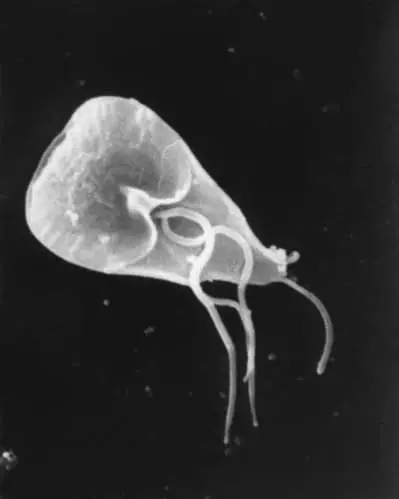
Some Protozoa are heterotrophic, which means they depend on other organisms for sustenance. Other protozoans are autotrophic, which means they can produce their food by using sunlight and biochemical substrates.
Compared to that of a human who can reach anywhere from three trillion to three hundred trillion cells, protozoans are unicellular organisms, which means they are composed of only one cell. They are also eukaryotic microorganisms, which means that they have membrane encased organelles and the genetic material is enclosed in a central nucleus or in some cases nuclei.
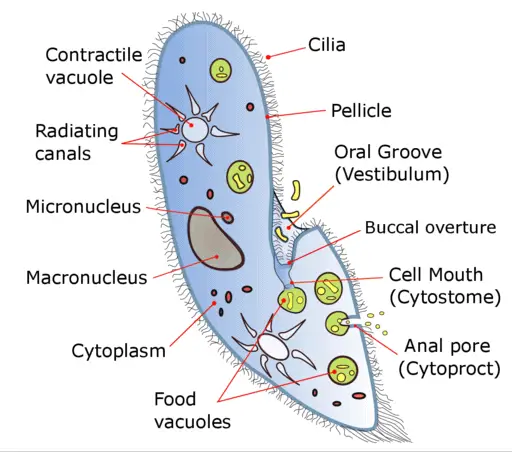
These microorganisms lack cell walls, compared to plants and some bacterial cells, but have a reliably rigid cell membrane to protect them from environmental insults. Most protozoa are colorless and do not have natural pigments in their cell, compared to the green chlorophyll in algae and plant cells. Some of them are capable of locomotion, with built-in foot-like processes or whip-like tails that allow them to swim in moist environments, while others are just stationary.
Protozoans are microscopic. Their size ranges from about 2 to 200 micrometers. Moreover, most species of protozoa are free-living, capable of using biochemical substrates and environmental factors to sustain life, while others are widely known parasites that needed higher animals as hosts, to survive.
Where do Protozoa Live?
Because of their wide variety of structural and physiological qualities, different protozoa species can be found practically everywhere on the planet.
Protozoans are widespread but are found mostly in aquatic habitats, from freshwater to marine and even in brackish waters. Any moist environment can allow motility for protozoans and can further support the life of these microorganisms.

Protozoa use their whip-like projections called flagella, hair-like structures called cilia, and false feet known as pseudopods to propel and push themselves through whatever medium they find themselves in.
Some protozoa are observed growing in soil, sewage, and sludge being adept at living in the ground with its adequate warmth, richness in organic materials for food, and a consistent supply of moisture from the water vapor in the air.
While some choose safer environments for sustaining life, others take on a great challenge and can thrive in extremely harsh environments ranging from the piping hot temperatures of the desert, up to the frigid temperatures of the arctic.
Besides some offbeat habitats, they can also be present in aerial habitats such as surfaces of trees or as ‘cyst’ in the air. Meanwhile, parasitic protozoan resides in their respective host in different parts of the animal body. Some of these parasitic protozoans call for transmission through different hosts from snails, fishes, insects, and birds until they reach their desired host, usually a large mammal.
The human body is an ideal habitat for some of these parasitic organisms since the human physiologic temperature and pH are regulated, and the vicinity of the human tissue is adequately nourished, making it a suitable home for these microorganisms. The tissues that are adequate habitats for protozoal life include the human gut, liver, and red blood cells.
What and How do Protozoa Eat?
Can these microscopic creatures efficiently obtain their food? Does their diet need to be smaller than them, or can they slowly devour a larger organism? Can they eat more advanced animals? Surprisingly, the answer to all of these questions is yes!
As mentioned earlier, most protozoa are heterotrophic and require organic compounds from other exogenous sources. It can come either from other protozoa, bacteria, animals, or even just environmentally available substrates, as their primary nutritive sources. Since they are heterotrophs, they obtain their food by endocytosis, which is a process wherein a particle is taken into their cell. Phagocytosis and pinocytosis are the two kinds of endocytosis.
Most protozoan ingests particulate materials by phagocytosis or “cell eating,” which is the process of engulfing and digesting microscopic organic particles by surrounding it with a portion of their cell membrane. Some protozoa can swallow smaller eukaryotic cells or even whole bacterial cells, which may count as predation in the microscopic world to demonstrate its range of phagocytosis.
They first sense the organic particle that is targeted using special receptors in their cell membrane. Then, at a vantage point, they engulf the whole particle, eventually covering it entirely and forming its storage vacuole within the cell. It can now be digested for its biomolecules to support growth and cell division.
Pinocytosis has also been observed in protozoa, wherein the protozoa form a straw-like projection, puncturing it to the larger organism and eventually sucking its contents rich in organic matter. It is this very reason why it is also known as “cell drinking”.
How do Protozoa Reproduce?
Like other microorganisms, protozoans have the option to undergo either sexual or asexual reproduction, depending on their current environmental situation and ability to survive in that particular environment.
When it comes to replication, we must take note that their habitat consists of relatively extreme ecological factors, which may render them susceptible to harmful elements and possible harm. Therefore, reproduction is a highly important part of life to ensure that there is an incoming future generation for the particular species.
The most common form of asexual reproduction in protozoa is binary fission, which is a cell division wherein a cell gives rise to two independent cells, usually genetically identical, because of the lack of genetic recombination and crossing-over.
Several bacterial species also do this as it is convenient for increased rate of multiplication, taking up less time, nutrition, and overall effort. Its disadvantage, however, is smaller genetic variability, and therefore these species may be more susceptible to harm from a similar environmental factor, harming both parental and filial generations. On the other hand, sexual reproduction is achieved through conjugation via an exchange of gametes between paired protozoa of complementary mating types, similar to being a male and female.
Most protozoan reproduce asexually, while some by sexual means. Both sexual and asexual reproduction has been observed to occur in the classification of Apicomplexans.
Some protozoa, primarily the parasitic ones, have a two-phase life cycle that includes alternating between the motile trophozoite and dormant cyst. The trophozoite is the invasive stage where it actively feeds on tissues of its host and thus needs to have increased mobility for navigation through the body of the host. While cyst is the resting stage that has a thick protective membrane that enables it to survive outside the host for a long time, and it ensures that there is a viable organism ready for development soon.
The process of cyst formation is called encystation. Whereas, excystation is the transition from the cyst to trophozoite that takes place in the large intestine of the host after being ingested.
How are Protozoa Classified?
Because they are of widely varying properties, from autotrophs to heterotrophs, they have been progressively changed when it comes to classification. They do accommodate three types of protozoans based on their similarity to the higher, more advanced organisms, including animal-like, plant-like, and fungus-like. These different properties have been developed through time and thus have produced two types of classification: the Old Classification and the New Classification.
Old Classification
Traditionally, the mechanisms of motility of these protozoans have been central for characterizing them into designated classifications. Protozoa that move using false feet or pseudopodia are called the Sarcodina; those using hair-like projections or cilia are called the Ciliophora, and those using a whip-like contraption or flagella are called the Mastigophora. The fourth group bearing not much motility structure, the Apicomplexa, are generally nonmotile.
Sarcodina (The Amebas or Amoebas) – These are the protozoan that utilizes pseudopodia (false feet) by spreading or withdrawing their cell membrane by the help of their cytoskeleton for various purposes. They can use these for motility for wading through an aqueous environment like flippers, or they can extend these to surround an unsuspecting bacteria to engulf them by phagocytosis. They are normally found in soil and aquatic habitats, both freshwater and marine.

Representative organisms: Amoeba, Entamoeba
Ciliophora (The Ciliates) – Members of this group are motile by using cilia or hair-like projections in their cell. What makes them unique is that they have two kinds of nuclei– a macronucleus and a micronucleus. The macronucleus is responsible for the overall aspects of the cell growth and function, serving as the higher command of the cell. At the same time, the micronucleus deals with the complexity of sexual reproduction.
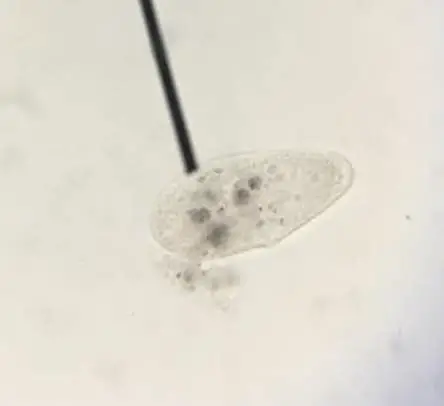
Representative organisms: Paramecium, Balantidium, Tetrahymena
Mastigophora (The Flagellates) – This protozoan group moves by the action of a whip-like extension called flagella, through severe whiplash resembling the rotor of a motorboat. Many species belonging to this group are human pathogens, transferring to several organisms such as snails, fishes, and birds until they reach the human body as its final host. One of the most significant among them is the trypanosomes that cause severe diseases, including the African sleeping sickness, and the Giardia, which causes explosive diarrhea.
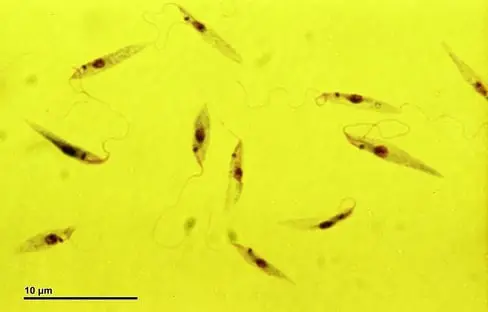
Representative organisms: Giardia, Trichomonas, Leishmania, Trypanosoma
Apicomplexa (The Sporozoans) – All members of this group are non-motile and obligate parasites. Being an obligate parasite means total dependence on their host for survival and reproduction. Even in their non-motile state, these protozoans are very concerning once it gets to the human body and causes infection.
It does not only do harm to the living tissues but also the immune system reacts to it and that may aggravate the current condition of the unsuspecting host. They also traverse several human organs, converting itself to several life stages to adapt to the internal environment of the human. It can infect the intestines, be transmitted through blood, and even be deposited in the muscles.
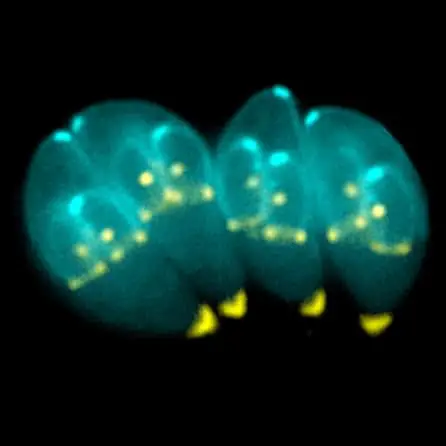
Representative organisms: Toxoplasma, Plasmodium
New Classification
Through the years, these primitive classifications of protozoa into sarcodina, ciliophora, mastigophora, and apicomplexa have been regarded as a more general classification to the highly varying properties of protozoans.
Technically, if a group of organisms contains different specific phenotypes or any observable characteristics, they must be segregated further into various classifications. In lieu of this, and according to subsequent research, the four groups can be changed and divided into fourteen (14) species since the old classification is significantly misleading, and some organisms coincide as other types of eukaryotic organisms.
For instance, Microsporidia (an obligate parasite) were previously grouped under protozoa, but molecular evidence suggests that they are more related to fungi. There are currently 14 phyla in the New Classification.
- Archamoebae
- Neomonada
- Rhizopoda
- Mycetozoa
- Foraminifera
- Heliozoa
- Radiozoa
- Percolozoa
- Euglenozoa
- Dinozoa
- Metamonada
- Parabasala
- Apicomplexa
- Ciliophora
Key characteristics of each phyla were mentioned by Corliss (2001) in his papers. Despite the modern approach in taxonomy and systematics, many textbooks used today still uses the classical grouping since they are much simpler and easier to understand.
These can again be adapted, especially in the education setting, as they safely segregate the more general properties of the protozoans. But when it comes to being specific, we must have a more molecular and genetic basis in the classification of protozoans and would thus warrant the usage of the New Classification.
How do Protozoa Differ from Bacteria?
Protozoa can be confused with many other microscopic organisms, most notably bacteria. In general, the size of protozoa significantly differs from bacteria as protozoans are bigger in size and structurally more complex. Bacteria are prokaryotic, which means they do not have membrane encased organelles and lack a defined nucleus.
Protozoa are eukaryotic and have more advances characteristics in feeding, motility, and overall survival. Recall that the major features of eukaryotes absent from prokaryotes are the presence of membrane-bound organelles and a true nucleus.
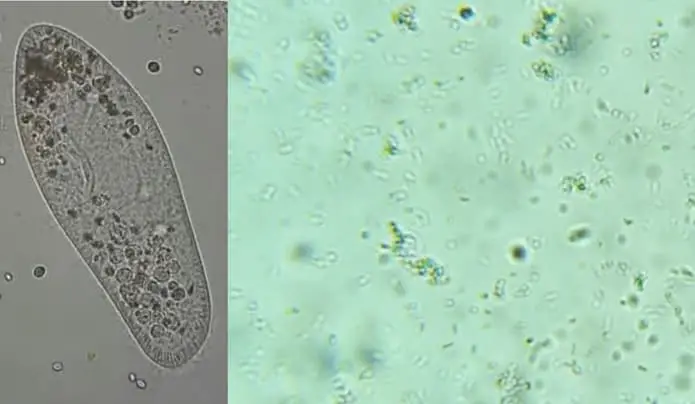
What Illnesses can Protozoa Cause?
Because some protozoans lean towards a parasitic way of life, they tend to cause human illnesses during their stay in the human body. There are many diseases caused by protozoan infection, ranging from mild to fatal ones. But discussing them all is lengthy, so here is a brief list of the most common diseases caused by protozoa.
Acanthamoeba keratitis – Acanthamoeba can cause infection in the cornea of the eye. Contact lens wearers are more prone to getting the disease, but there are also reported cases in non-contact lens wearers.
African trypanosomiasis (“sleeping sickness”) – The disease is caused by Trypanosoma brucei that is transmitted from host to host by the tsetse fly (Glossina species). As the name of the illness implies, this illness disrupts the sleep cycle.
Dysentery – Entamoeba histolytica is an excellent example of a parasitic amoeba that causes amoebic dysentery, characterized by severe diarrhea and ulceration of the intestine. Balantidium coli, a known parasite of domestic animals, can also cause dysentery symptoms similar to those caused by E. histolytica.
Malaria – Plasmodium species is the causative agent of malaria transmitted by female Anopheles mosquitoes only. Unfortunately, Anopheles mosquitoes thrive in warmer habitats; thus, malaria occurs mainly in the tropics.
Evolutionary Considerations
Because of their highly varying characteristics, scientists suspect that they may have come from different evolutionary roots and therefore, may further branch out to several more advanced organisms like fungi, plants, and animals. Is it possible that the connection between the bacteria and the multicellular organisms is the protozoans? Have the protozoans developed the characteristics of primal organisms into multicellularity?
Let’s take a look at different groupings of protozoa and their similarities to more advanced organisms.
Fungi-like protozoans – Slime molds are these fungus-like microorganisms that are saprophytic, meaning they depend on the decomposing matter at the floor of the ecosystem. While this may be unappetizing to higher animals, saprophytic nutrition is really convenient and energy-efficient and has supported slime molds for how many centuries now.
In addition to this, saprophytes are profoundly important in the ecosystem as they convert decomposing organic material into once again usable energy available to higher organisms. These slime molds are evolutionarily considered to be the origin of the fungi, as we know today.
Plant-like protozoans – Some types of Algae are what we call the plant-like protozoans, which may act like other protozoans with motility, but are independent of other organisms for sustenance as it has its chlorophyll for it to undergo photosynthesis. Some can also move, using flagella, towards the sunlight.
Its motility and capacity to endure autotrophic nutrition assures that these microorganisms will still survive for more extended periods. These algae are suspected to be the precursor of plant life and are considered a branch in the evolutionary tree of plants.
Animal-like protozoans – These are generally distributed as ciliates, flagellates, and amoeba, due to their differences in modes of motility, but the thing that matters here, which makes it an animal-like protozoan, is both its property of heterotrophic nutrition and motility.
These have been suspected to be the precursors of the primitive animals, which have further developed for multicellularity in order to grow into larger organisms.
Why are Protozoa not Classified as Animals?
The primary reason protozoa are not classified as animals is because animal cells are multicellular (made up of many cells) while protozoa are unicellular (made up of only one cell). Another peripheral reason is that protozoans lack centrioles which are a critical part of mitosis. Protozoa typically replicate through conjugation or binary fission.
Interesting Facts About Protozoa
- Anton van Leeuwenhoek, Father of Microbiology, was the first to observed protozoa in 1677 by using the simple, single-lens microscope he invented. For more on the history and evolution of microscopes see The First Microscope to Modern Microscopes: Evolution and History of Microscopes.
- There is a species protozoa that resides in the mouth of some people. Entamoeba gingivalis is the species that causes oral infection. They are closely related to E. histolytica, the agent of amoebic dysentery (amoebiasis).
- The largest known protozoon is Xenophyophores, belonging to Foraminifera, that lives in the sea floor. These organisms can grow to be up to 20 centimeters long!
- Some protozoa like ciliates help in treating wastewater by eating the bacteria found in sludge.
- Protozoans are unicellular, eukaryotic, microorganisms, that pushed our taxonomists to the limit with its varying phenotypes. This group is a taxonomist’s go-to classification if the properties of a microorganism are unclear and does not fully conform with the three higher classifications of organisms (plants, animals or fungi) leading them to call it the “Trash can kingdom.” More of these properties are being discovered today and researchers are hoping to further classify them specifically according to their molecular and genetic profiles, thus producing a more objective and comprehensive family tree for the protozoans.
Takeaways
Protozoans are fascinating microorganisms and because they are so widespread, are easily accessible for researchers and amateur microscopists to analyze. There is so much more to learn from these tiny creatures in the fields of disease prevention, genetics, and evolutionary biology.
When you are swimming in a lake, pond, or river take some time to appreciate the tiny protozoa that you can’t see but are there swimming right beside you!
References
- https://www.ncbi.nlm.nih.gov/pmc/articles/PMC6215854/
- https://academic.oup.com/icb/article/13/1/145/1992138
- http://www.higiene.edu.uy/ubp/ubp_files/papers/1-2_Protax.pdf
- https://www.cdc.gov/parasites/sleepingsickness/index.html
- https://www.cdc.gov/parasites/malaria/index.html
- https://www.sciencedirect.com/science/article/pii/S0006320716304633
- https://www.ncbi.nlm.nih.gov/pmc/articles/PMC4330640/
- https://www.ncbi.nlm.nih.gov/pmc/articles/PMC4360124/
- https://www.sciencedirect.com/topics/agricultural-and-biological-sciences/plankton
- https://www.ncbi.nlm.nih.gov/books/NBK8325/

